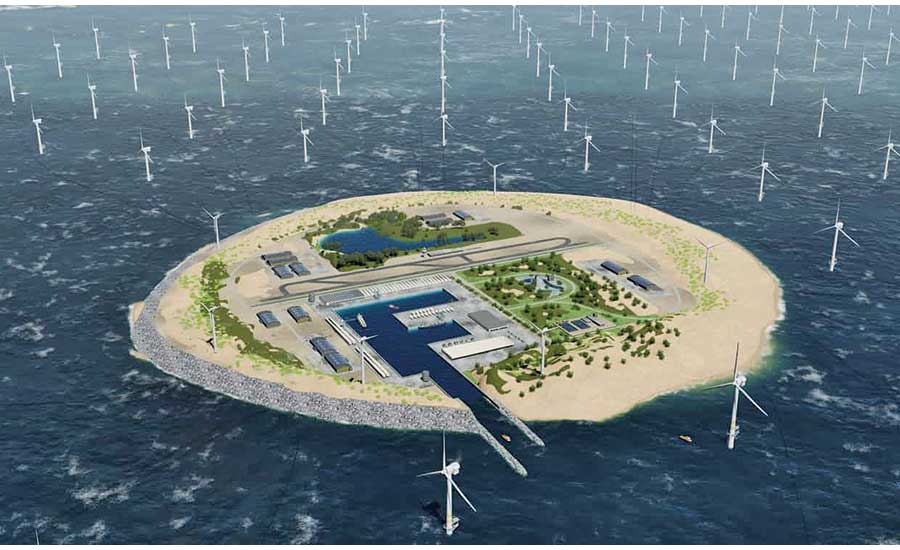To expand offshore wind in Europe and reduce the cost of connecting turbines farther out to sea by cable as coastal locations fill up, TenneT, a major European transmission grid operator, is studying the feasibility of building a $1.8-billion man-made wind-farm island in the North Sea between the U.K. and Denmark—and maybe others. The plan was developed with an eye toward meeting 2050 carbon dioxide emission targets in Europe, which will require large-scale wind generation in the region.
“We’re thinking of a modular approach” for the project, called the North Sea Wind Power Hub, says Jeroen Brouwers, a spokesman for TenneT, the transmission operator for the Netherlands and most of Germany. The islands would be built in a shallow North Sea area called Dogger Bank, about 78 miles from the coast of England known for high winds and near where territorial waters of the Netherlands, Germany and Denmark meet.
The islands are expected to be about 2.3 sq miles in size. Each could allow up to 30 GW of wind generation, with a build-out of 100 GW. Proposed wind farms farther out at sea will connect to the island, where a power hub then distributes electricity to surrounding North Sea countries. “Of course, such large volumes cannot be built in just a few years; this will take up to 20 years,” says Brouwers. Construction could begin after 2030.
Project consortium partners also include Energinet, the Danish power and natural gas transmission company; Gasunie, a Dutch natural gas transmission firm, and the Port of Rotterdam. More partners could be added in the future.
In a study recently released by TenneT, adding the islands would allow alternating current from the wind farms to be converted to high-voltage direct current on the islands for transport through undersea cables to AC converter stations in Europe and the U.K. A separate study found that using a wind connector to link the Dutch and the U.K. power markets that also interconnects with the offshore wind farms could save about $2 billion in capital costs.
With the link, wind farm power could be sent where most needed. Other North Sea-bordering countries could also be tied in. Construction start will depend on political, legal and regulatory support among potential recipient countries, including the U.K., Netherlands, Germany, Denmark, Belgium and Norway.




Post a comment to this article
Report Abusive Comment